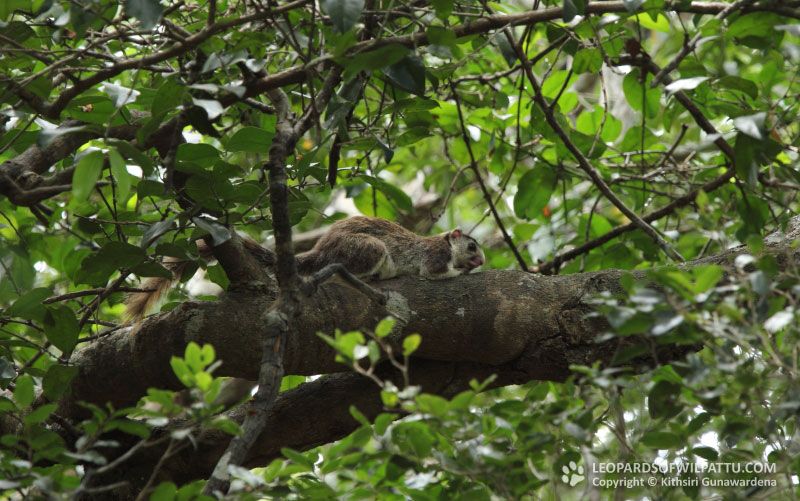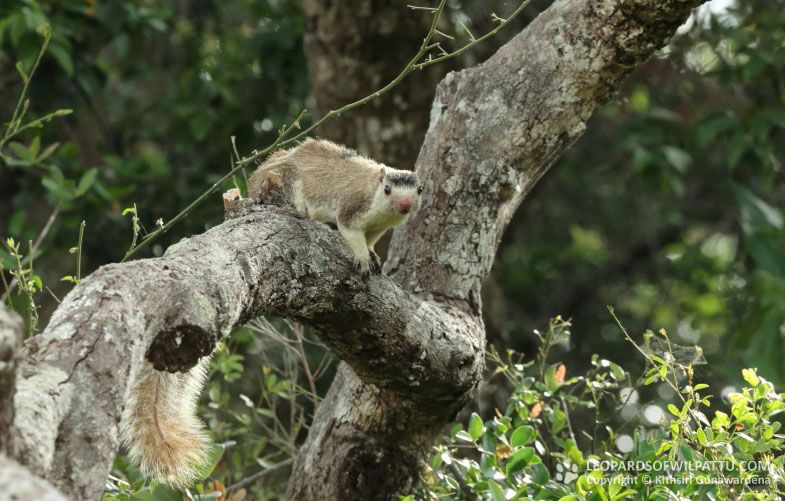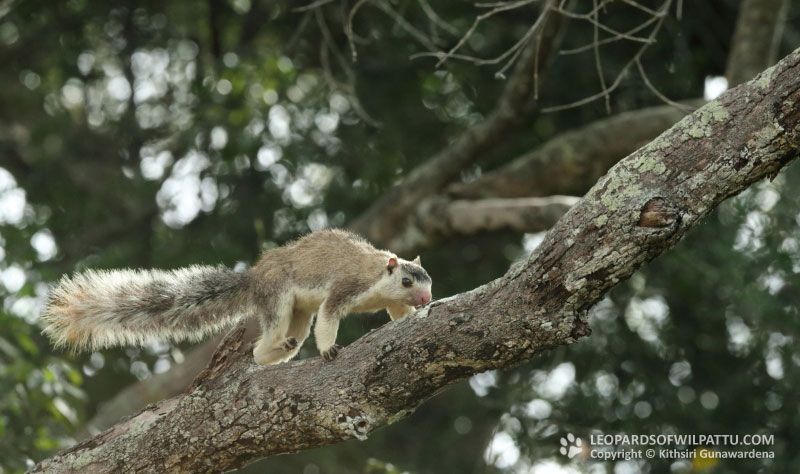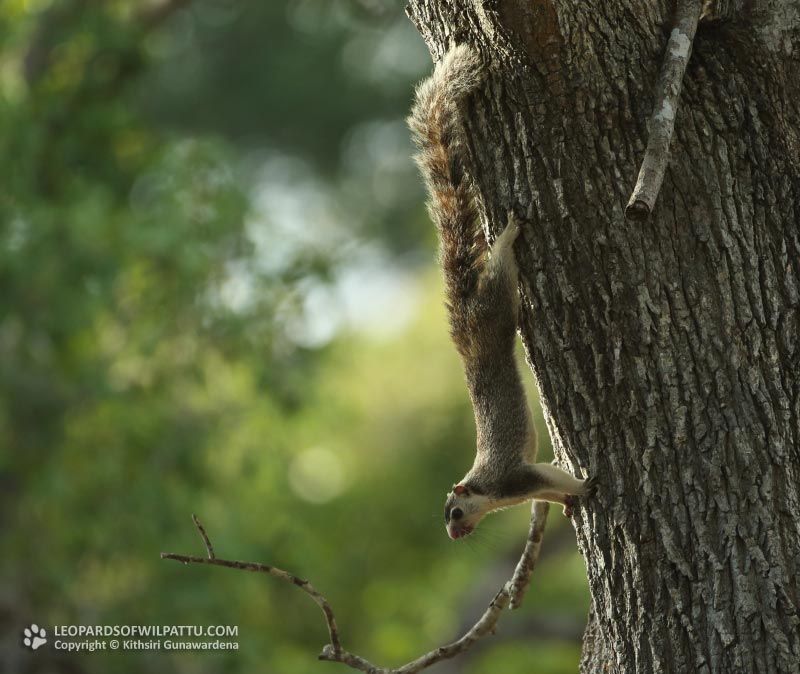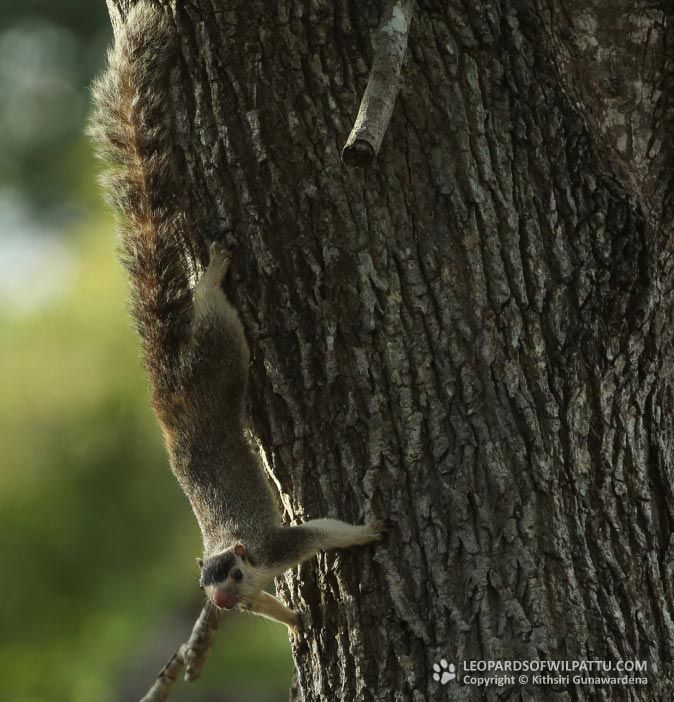
Mammals ‹‹ Go Back
Three subspecies are recognized in the world. Ratufa macroura macroura is found in the highland jungles and the Uva province from an altitude about 2,200 meters down to about 1000 meters. This subspecies can be commonly seen in Horton Plains National Park. Ratufa macroura melanochra is found in the jungles of the low country wet zone. This subspecies can be seen in Kanneliya, Kottawa forest in Galle, Labugama, and Ratnapura etc. Ratufa macroura dandolena is found throughout the low country dry zone from north to the south. Except for a few small fragmented populations of Ratufa macroura dandolena found also in Kerala and Tamil Nadu in South India, the other two subspecies are endemic to Sri Lanka. The separation of subspecies is primarily based on the varying colour and size according to the altitude or climatic condition of the jungles they inhabit. The conservation status of this species is regarded as Least Concerned (National Red List 2012).
This is a species protected under the Fauna and Flora Protection Ordinance as amended by Act No. 22 of 2009.
During a study that I conducted on the breeding behavior of Black Eagles Ictnaetus malayensis at Dolukanda, an isolated hill forest, located in the north-western Province of the country the majority of prey that was fed to the chicks by the parents from birth until they left the nest consisted of immature and sub adult Giant Squirrels.
The subspecies that is found in Wilpattu National Park is Ratufa macroura dandolena. I have heard its call on almost all my trips to the park but sightings have been infrequent due to them occupying the canopy. However their numbers in Wilpattu do not appear to be as numerous as in the north central or southern forests of the country.
The best time of the year to see them is when the Madan trees around the villus are in fruit. A careful observer will be able to detect a number of these squirrels feeding on the ripe berries of these trees.

